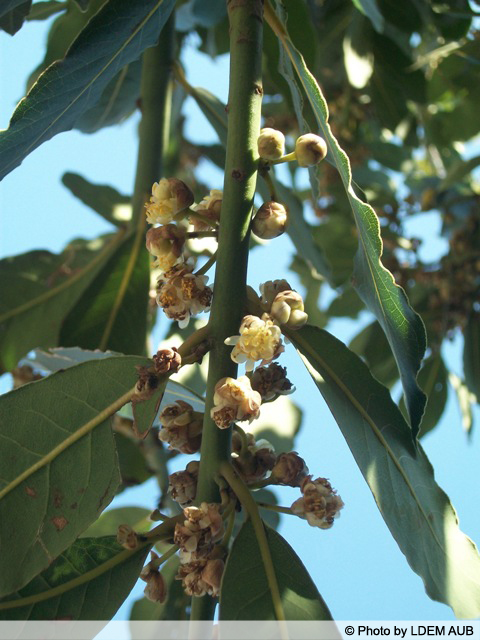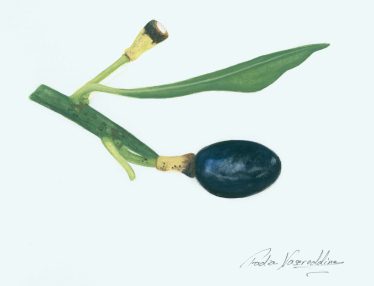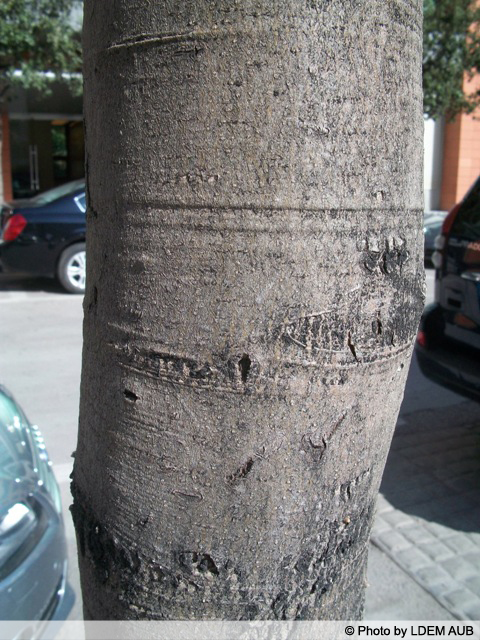Laurus nobilis (Bayleaf)
The laurel tree is a tree famous for the pleasant smell of the leaves, which are used for cooking mainly. The tree is usually grown in containers, and can also be used as a specimen. The trees are typically multi-trunked, and can be trained to a single trunk growth form. The single trunked trees are more durable, and can hold the tree steady in the ground. These trees grow rather well in shade, and can tolerate urban conditions, and have been doing well as street trees. The pollen however, mainly from the male trees, can cause some allergy problems, while the female trees produce none
- Landscape Information
- Botanical Description
- Horticulture Management
-
By Giancarlo Dessì (Own work) [GFDL (http://www.gnu.org/copyleft/fdl.html) or CC BY-SA 3.0 (http://creativecommons.org/licenses/by-sa/3.0)], via Wikimedia Commons
-
-
-
By H. Zell (Own work) [GFDL (http://www.gnu.org/copyleft/fdl.html) or CC BY-SA 3.0 (http://creativecommons.org/licenses/by-sa/3.0)], via Wikimedia Commons
-
-
By No machine-readable author provided. Jean-Philippe DANIEL assumed (based on copyright claims). [GFDL (http://www.gnu.org/copyleft/fdl.html), CC-BY-SA-3.0 (http://creativecommons.org/licenses/by-sa/3.0/) or CC BY-SA 2.5-2.0-1.0 (http://creativecommons.org/licenses/by-sa/2.5-2.0-1.0)], via Wikimedia Commons
Search plant on Google
Download as PDF
-
French Name: laurier noble
Arabic Name: Wara'a Ghar
Pronunciation: law-russ NO-bil-iss
-
Plant type: Tree
-
Origin: Mediterranean
-
Heat Zones: 1 to 12
Hardiness Zones: 8 to 13
-
Uses: Screen, Hedge, Specimen, Container, Edible, Street, Native to Lebanon
-
Size/Shape
Growth Rate: Moderate
Tree Shape: Pyramidal, Round
Canopy Symmetry: Symmetrical
Canopy Density: Dense
Canopy Texture: Medium
Height at Maturity: 8 to 15 m
Spread at Maturity: 5 to 8 meters
Time to Ultimate Height: 10 to 20 Years
-
By Giancarlo Dessì (Own work) [GFDL (http://www.gnu.org/copyleft/fdl.html) or CC BY-SA 3.0 (http://creativecommons.org/licenses/by-sa/3.0)], via Wikimedia Commons
-
-
-
By H. Zell (Own work) [GFDL (http://www.gnu.org/copyleft/fdl.html) or CC BY-SA 3.0 (http://creativecommons.org/licenses/by-sa/3.0)], via Wikimedia Commons
-
-
By No machine-readable author provided. Jean-Philippe DANIEL assumed (based on copyright claims). [GFDL (http://www.gnu.org/copyleft/fdl.html), CC-BY-SA-3.0 (http://creativecommons.org/licenses/by-sa/3.0/) or CC BY-SA 2.5-2.0-1.0 (http://creativecommons.org/licenses/by-sa/2.5-2.0-1.0)], via Wikimedia Commons
Search plant on Google
Download as PDF
-
Foliage
Leaf Arrangement : Alternate
Leaf Venation: Pinnate
Leaf Persistance: Evergreen
Leaf Type: Simple
Leaf Blade: Less than 5
Leaf Shape: Lanceolate
Leaf Margins: Undulate, Entire
Leaf Texture: Glossy, Medium
Leaf Scent: Pleasant (Spicy)
Color(growing season): Green
Color(changing season): Green
-
Flower
Flower Size Range: 0 - 1.5
Flower Type: Solitary
Flower Sexuality: Monoecious (Bisexual)
Flower Scent: No Fragance
Flower Color: Yellow
Seasons: Spring
-
Trunk
Trunk has Crownshaft: No
Trunk Susceptibility to Breakage: Generally resists breakage
Number of Trunks: Multi-Trunked, Can be trained to one trunk
Trunk esthetic Values: Not Showy
-
Fruit
Fruit Type: Berry
Fruit Showiness: Yes
Fruit Size Range: 0 - 1.5
Fruit Color: Black
Seasons: Spring
-
By Giancarlo Dessì (Own work) [GFDL (http://www.gnu.org/copyleft/fdl.html) or CC BY-SA 3.0 (http://creativecommons.org/licenses/by-sa/3.0)], via Wikimedia Commons
-
-
-
By H. Zell (Own work) [GFDL (http://www.gnu.org/copyleft/fdl.html) or CC BY-SA 3.0 (http://creativecommons.org/licenses/by-sa/3.0)], via Wikimedia Commons
-
-
By No machine-readable author provided. Jean-Philippe DANIEL assumed (based on copyright claims). [GFDL (http://www.gnu.org/copyleft/fdl.html), CC-BY-SA-3.0 (http://creativecommons.org/licenses/by-sa/3.0/) or CC BY-SA 2.5-2.0-1.0 (http://creativecommons.org/licenses/by-sa/2.5-2.0-1.0)], via Wikimedia Commons
Search plant on Google
Download as PDF
-
Tolerance
Frost Tolerant: Yes
Heat Tolerance: Yes
Salt Tolerance: Moderate
-
Requirements
Soil Requirements: Clay, Loam, Sand
Soil Ph Requirements: Acidic, Alkaline
Light Requirements: Full, Part, Shade
-
Management
Toxicity: No
Susceptibility to Pests and Diseases: No
Pruning Requirements: Little needed, to develop a strong structure
Fruit/ Leaves/ Flowers litter: Yes
Life Span: More than 50
Diseases: Downey Mildew, Gray mold
Edible Parts: Leaf
Pests: Aphids, Mealy-Bug
Plant Propagation: Cutting



